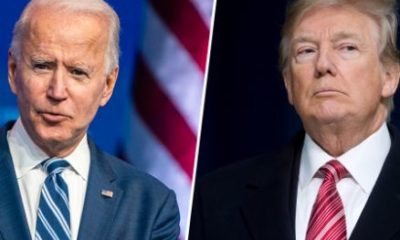World
Innovate to address children’s problems, says Unicef

United Nations: The United Nations Children’s Fund (Unicef) Thursday called for addressing the most pressing problems facing children and driving innovations for the most disadvantaged ones.

Marking 25 years of the Convention on the Rights of the Child, the Unicef released a report on the State of the World’s Children, calling on governments, development professionals, businesses, activists and communities to work together on this matter of innovation, as per reported.
Noting that innovations are already happening at local level to help children gain access to services and opportunities, the report, titled Re-imagine the Future: Innovation for Every Child, said that such innovations should be brought to benefit more people.
To maximise the benefits for the most disadvantaged children, the innovative solutions should involve participation of disadvantaged and vulnerable people, based on a better understanding of their realities and needs, said the report.
UN statistics illustrate the existence of inequity – 79 percent of the richest children under age 5 have their births registered but only 51 percent of the poorest have an official identity.
Compared to 20 percent of the world’s richest children, 20 percent of the poorest ones are twice likely to be stunted by poor nutrition and to die under age 5.
“Inequity is as old as humanity, but so is innovation — and it has always driven humanity’s progress,” said Unicef executive director Anthony Lake.
The report illustrated several innovative cases to demonstrate the importance to listen to children. Viraj Puri, a 14-year-old boy, created Bullyvention, a way to leverage the power of people and technology to track and advocate against cyber-bullying based on algorithms that analyse social media messages.
“Children and young people are natural innovators. They are also acutely aware and deeply concerned about the challenges facing their communities,” said the report.
“Nurturing their creativity and critical thinking is key to helping them develop their potential to address these problems.”
The United Nations General Assembly adopted the Convention on the Rights of the Child in 1989.
World
Lockdowns in China Force Urban Communities to Defy Censorship and Vent Frustration Online

Shanghai’s rich middle class is leading a wave of online dissent over the strict and prolonged lockdowns imposed in various parts of the country. Chinese internet censorship is struggling as patience is wearing thin in many urban centers, coming up with creative forms of online protests.
Social Media Posts Revealing Lockdown Tension in Shanghai
Drawn-out lockdowns are nothing new in China as authorities insist with the nation’s zero-Covid policy since the start of the pandemic. Currently over This time around, however, metropolitan areas like Shanghai are increasingly difficult to keep quiet, given that its more than 25 million residents have seen weeks of total isolation along with food shortages and many other service interruptions.
Dozens of towns and reportedly over 300 million Chinese citizens have been affected by lockdowns of different severity. As expected, urban netizens have been most outspoken over their difficulties by finding creative ways to get around state censorship and bans placed on topics, news comments and spontaneous campaigns.
Shanghai residents have been using mobile proxies and hijacking seemingly unrelated hashtags to talk about healthcare issues, delivery failures and the overall severity of their situation. The “positive energy” that the Chinese government wants to transmit during the recent prolonged series of lockdowns does not come naturally to those counting food supplies and online censors are working hard to filter words, trending topics and undesired social media sharing.
WeChat groups and message threads are under constant monitoring. Posts questioning the zero-Covid approach have been quickly deleted, including by leading Chinese health experts like Dr. Zhong Nanshan. Video footage is soon censored and protests and investigations are quickly made to disappear.
Where this has not worked, officials have exposed banners with warnings and outright threats like “watch your own mouth or face punishment”, while drones have been patrolling the city skies. Yet, if anything, this has led to further tensions and unspoken confrontation with Shanghai’s educated and affluent middle class.
Creative Online Solutions Harnessing Civic Energy
Announcements by Chinese social media that they would be publishing the IP addresses of users who “spread rumors” have not helped either. Tech industry research has shown that much of Asia’s tech-savvy population has a habit of using mobile proxies and other privacy tools, quickly finding workarounds to browse the internet freely and talk to the world about the hottest topics.
The sheer volume of forbidden posts is already a challenge for the very censorship system, experts explain. Unable to track all trending hashtags, state workers overlook topics that speak about the US, Ukraine or other popular news. Linking human rights elsewhere to their situation, Chinese online dissidents establish their informal channels and “hijack” the conversation to share personal or publicly relevant information about the Covid suppression in their town.
Sarcastic and satirical posts still dominate. Others hope to evade the censors by replacing words from famous poems or the national anthem. One thing is certain – social media, when harnessed with the right creativity, has proven its ability to mount pressure on the government in even some of the most strictly controlled tech environments like China.























